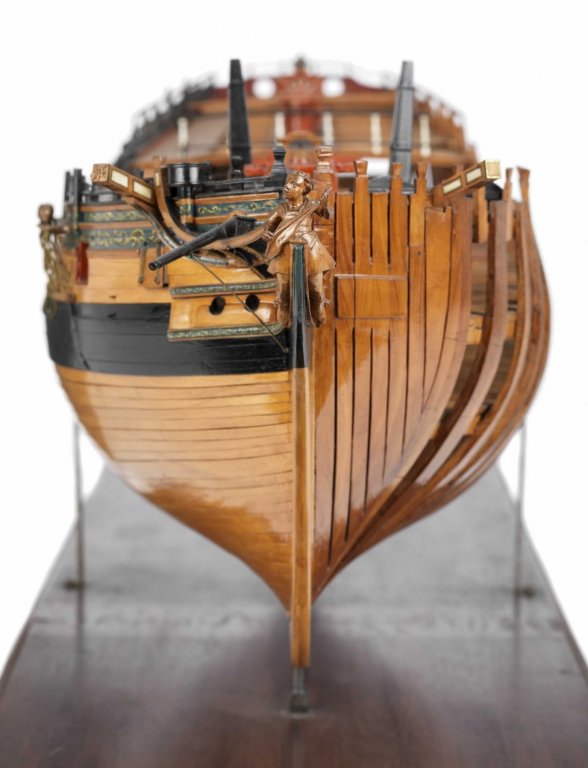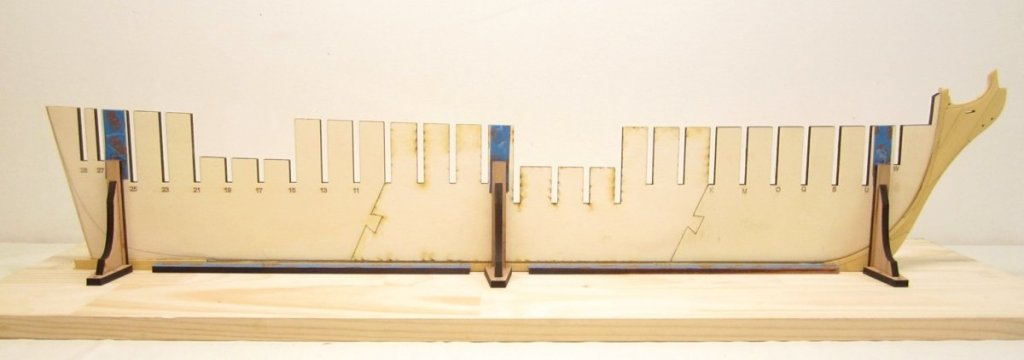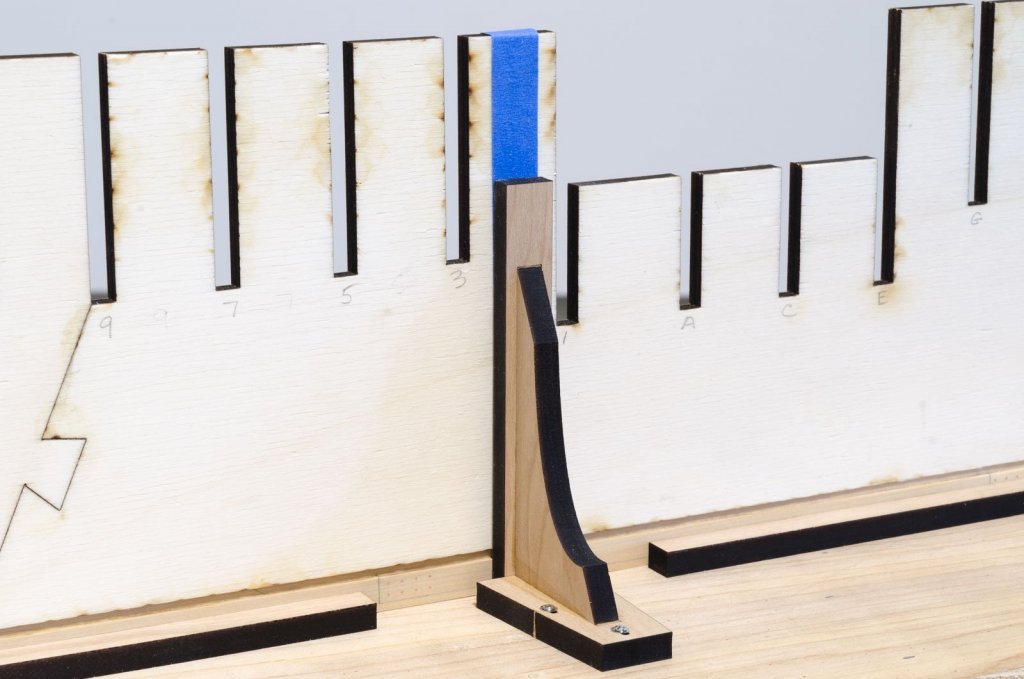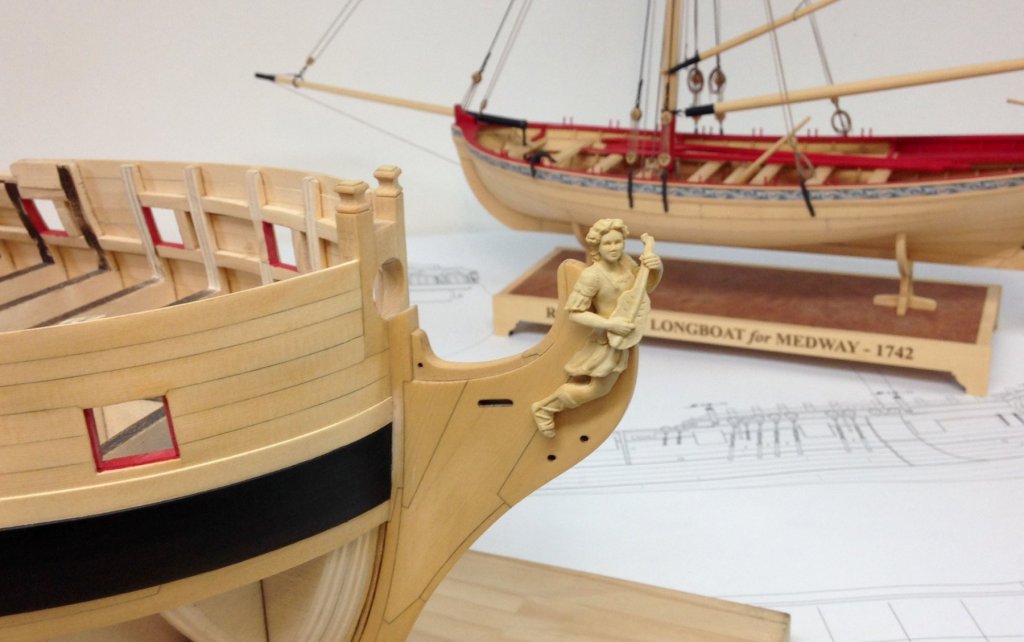-
Posts
9,660 -
Joined
-
Last visited
Content Type
Profiles
Forums
Gallery
Events
Everything posted by Chuck
-
thats good to know....whic ones. this one this one or this one....i dont like the color in this one below. But the other images above are pretty accurate to the real thing, yes?
- 1,784 replies
-
- winchelsea
- Syren Ship Model Company
-
(and 1 more)
Tagged with:
-
I agree 100%.....But I am not joking about changing it if in fact someone prefers it looking more forward. The resin is so forgiving to work with. And now that the resin is cast through in a tan/wood color, cleaning up the seam is a piece of cake. Literally saw off his head and glue it back on facing any direction you prefer. Ten minutes tops. Here is a better view of the new colored resin figure. I only spent 5 minutes turning his head. Excuse the Iphone photo. Just learning how to use it. Playing with the camera settings.
- 1,784 replies
-
- winchelsea
- Syren Ship Model Company
-
(and 1 more)
Tagged with:
-
I wasnt planning on it but if folks want them rather than making something similar I will do so. But you will have to get your own screws and washers. Remember the first ten sets has three pairs of these included. I will use basswood. Maybe I will cut some early next week. I tried to accommodate the "cheap" guys trying to save $12. Its hard trying to accommodate everyone.
-
You mentioned that a few times before. Unfortunately that cant be changed now, so it is what it is. Mind you it really doesnt look to the side. The camera does seems to accentuate it and in real life it isnt as noticeable. Its actually less so than the contemporary model version below. And yes many figureheads dont look straight ahead.....this is just one example, and it was done to capture the look somewhat of the contemporary version. This model is a very important one and pains were taken to make it very accurate because it was presented to someone by the admiralty as a big deal at the time. So I am careful to capture its essence as closely as possible. I also think they do this on some contemporary models because they are most readily viewed from the side and by turning the head slightly, you can see the face detail better as models are usually displayed. On one side anyway. But the good news is that if it bothers anyone that much just decapitate the resin figure and turn slightly facing forward and glue it back on. Just a little clean-up and nobody will notice. LOL A quick decapitation on one of the other resin figurehead tests and you can see that you can easily have him look anyway you like. No fuss.....I didnt even touch it up afterwards. Took me five minutes. Chuck
- 1,784 replies
-
- winchelsea
- Syren Ship Model Company
-
(and 1 more)
Tagged with:
-
It wont matter if you remember to use many brackets on your build board. It will straighten any twist and warp. I used three but you can use 4 or 5 if you want. These are super easy to make. You just need to make little triangles (right angles) with a base. These are a bit fancier but they dont need to be. They should be screwed into the baseboard so you can remove them when planking the lower hull. I hesitate to sell these because they are so easy to make on your own. In fact I removed them from the installment for chapter one because some folks complained they could make them on their own and didnt need to pay extra for them. I havent laser cut any more of them but if some of you need these I could cut more of them and sell them as a separate item. They can be reused on any project. You can line the inside with tape or even felt so they wont damage your keel. They work a treat. Just note that the first ten 1st installments have three of these. So you guys got a bonus!!!! Screws and washers not included.
-
Just had the guys over for a nice Saturday get-together at my shop. Mike brought his Winnie. Side by side siblings....Mike's is in the front and is Boxwood. Mine is Yellow cedar and in the background. I just took these with my cell phone but here you go. Dropped my camera so its what I need to use until I get a new one. And also...here is a look (I know you guys are getting bored of seeing the figurehead at this point) at the figurehead and our latest experiment. This is another resin casting but I am experimenting with trying to cast them in a tan color that already looks like wood. This is a very very hard thing to do with success. But this figurehead has not been painted or touched up. This is the color right out of the package. I may go with it as its not perfect but very close. You guys can just do a light brushing with some weathering powders if you want it more golden or less tan. It depends on what wood you are building the model with. I am so happy with the results.
- 1,784 replies
-
- winchelsea
- Syren Ship Model Company
-
(and 1 more)
Tagged with:
-
You need to watch warping when you do that on a model this size. The reason you make three pieces is to help prevent twisting and warping of the false keel. Yes it is good to get it done in one piece, but it tends to want to warp and twist because of the slots cut into it on such a long single piece. So you must be very careful. Chuck
-
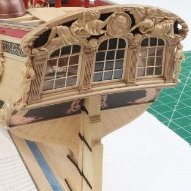
HMS Winchelsea (1764) 32 gun frigate GROUP PROJECT INFO
Chuck replied to Chuck's topic in Group Projects on Model Ship World
There are now about 25 members who were invited to the downloads forum. But they havent accepted yet. Remember, you must click on the invite in your notifications and click "accept" or "join". Otherwise you wont have access. Your notifications are at the top of the screen. It looks like a little globe and its where you get all of your other notifications. Its real easy to do. -
I have been corresponding with a lot of you folks who signed up. Many of you will be using the laser cut cedar parts which is awesome. In fact I have sold 20 first installments already. But it wasnt clear how many cedar sheets you would need to buy so you can mill your strips for Chapter two. I listed the number of strips needed but not how many sheets would be needed to mill them. Remember that it all depends on your saw and how thick your blade is. But if you are like me and have a .030 kerf blade to rip your strips, I have reworked the materials list for chapter two. It still lists the sizes and numbers of strips you will need. But now I have listed the number of sheets you will need to mill them. Please have a look and let me know if it is understandable. Another interesting point. Many of you have asked to ship the two laser cut installments in one box to save on shipping. This is what I have been doing if you buy them at the same time obviously. But after selling 20 of these, not one of you have bought any cedar sheets which would have also fit in the same box and saved you so much more on shipping. So if you are building it in cedar, dont forget to buy the planking sheets you need for chapter two.......those are the two inch sheets I am selling. You have to mill a lot of planking strips. Also you will need one regular width 1/16" cedar sheet for the caprail at the bow. You may also be interested in the fact that those cedar sheets will cost you about $48 so you can mill your strips. Had I milled them for you....all 350 strips for chapter two, it would have cost you about $260 for the labor. So this is the way to go. I sure am glad I dont have to mill the 7,000 cedar strips that would have been needed for those first 20 packages I sold. That would be insane. Thats how many I would have actually needed to mill. Crazy.
-
Just an update. I must have received a dozen emails and PMs about this today. The laser cut plywood Bulkhead set is being outsourced. I am not laser cutting them in my shop. In fact, Nic at Bluejacket is cutting all of my plywood bulkheads for this Winnie project. Just the plywood bulkhead set. Thank You Nic!!!! It will probably be another two weeks before he ships me the next batch of ten plywood bulkhead sets. The laser cut packages for the first two chapters are however in stock right now. They are the Yellow Cedar versions. I am going to try and laser cut a few in Cherry next week for those of you who are waiting for those. In addition, as mentioned several times before. This is not a complete "in the box" kit. You will need to mill your own planking strips etc. I have plenty of milled cedar sheets available for the project. And you can buy cherry sheets just about anywhere. https://ocoochhardwoods.com/scroll-saw-lumber/ these guys are a great source. I will provide the laser cut pieces/fittings for each chapter in Cedar and in Cherry. Probably more than you would have thought. I will have all of the carvings and cannon available too. BUT I will not be cutting any parts in any other woods . Sorry, its just too much to handle, two woods are my limit!!!! So please, if you want to use another wood other than those, you must scratch everything....or simply select another subject for your next project. If you ask , and you send me a PM or email and ask anyway, I am going to say "no". So keep this in mind. This is why we released this as an alternative scratch/semi-scratch project so you can build everything in any wood and in any scale you like. Thank You Enjoy the project. Chuck
-
I was talking to Chris and he had a wonderful idea. If you are cutting your own bulkheads......take advantage of the stronger birch ply because it has less tendency to warp, you could cut your false keel out of that. BUT you can switch to lite ply for all of your bulkheads which will make it easier to sand and fair later. Best of both worlds. Use both. Chuck
-

HMS Winchelsea (1764) 32 gun frigate GROUP PROJECT INFO
Chuck replied to Chuck's topic in Group Projects on Model Ship World
There are about 15 members who were given access and invited to the downloads forum. But they havent accepted yet. Remember, you must click on the invite in your notifications and click "accept". Otherwise you wont have access. Your notifications are at the top of the screen. It looks like a little globe and its where you get all of your other notifications. Its real easy to do. At least I thought it would be for folks, LOL . -
Ok the first chapter is now available for download so you guys can get started. This should keep you guys busy for a while. I will now try and catch up with making blocks and rope and more laser cut packages. Let me know if you guys have any questions on the first chapter. At 26 pages, by the time this project is completed we will be looking at several hundred pages of instructional material. In just a couple of days we have had over 50 people sign up for access to the plans and join the project. I would love to see more build logs set up for those who intend to build her. As I cant be on every forum with so much production work to do. I would appreciate if you could create a topic and maybe announce that this project has been started on other forums you belong to. Maybe even comment on facebook as well. I would love to get the word out there and any help you can give would HUGE!!!! Thanks in advance. Chuck
About us
Modelshipworld - Advancing Ship Modeling through Research
SSL Secured
Your security is important for us so this Website is SSL-Secured
NRG Mailing Address
Nautical Research Guild
237 South Lincoln Street
Westmont IL, 60559-1917
Model Ship World ® and the MSW logo are Registered Trademarks, and belong to the Nautical Research Guild (United States Patent and Trademark Office: No. 6,929,264 & No. 6,929,274, registered Dec. 20, 2022)
Helpful Links
About the NRG
If you enjoy building ship models that are historically accurate as well as beautiful, then The Nautical Research Guild (NRG) is just right for you.
The Guild is a non-profit educational organization whose mission is to “Advance Ship Modeling Through Research”. We provide support to our members in their efforts to raise the quality of their model ships.
The Nautical Research Guild has published our world-renowned quarterly magazine, The Nautical Research Journal, since 1955. The pages of the Journal are full of articles by accomplished ship modelers who show you how they create those exquisite details on their models, and by maritime historians who show you the correct details to build. The Journal is available in both print and digital editions. Go to the NRG web site (www.thenrg.org) to download a complimentary digital copy of the Journal. The NRG also publishes plan sets, books and compilations of back issues of the Journal and the former Ships in Scale and Model Ship Builder magazines.




